Occupation Aviator, writer Role Writer | Name Antoine Saint-Exupery Nationality French | |
 | ||
Born Antoine Marie Jean-Baptiste Roger29 June 1900Lyon, France ( 1900-06-29 ) Period 1929–441944–2008 (posthumous) Notable awards Legion d\'honneur (1929)prix Femina (1929)Grand Prix du roman de l\'Academie francaise (1939)U.S. National Book Award (1940)Croix de guerre (1940)Prix des Ambassadeurs (posthumous)Croix de guerre avec palme (posthumous) Spouse Consuelo de Saint Exupery (m. 1931–1944) Books Wind - Sand and Stars, Night Flight, Flight to Arras, Citadelle, A Guide for Grown‑ups: Essential Similar People Consuelo de Saint Exupery, Mark Osborne, Jules Verne, Beryl Markham, Goran Gluvic | ||
Antoine de saint exup ry top 10 quotes
Antoine Marie Jean-Baptiste Roger, comte de Saint-Exupéry ([ɑ̃twan də sɛ̃tɛɡzypeʁi]; 29 June 1900 – 31 July 1944) was a French writer, poet, aristocrat, journalist, and pioneering aviator. He became a laureate of several of France's highest literary awards and also won the U.S. National Book Award. He is best remembered for his novella The Little Prince (Le Petit Prince) and for his lyrical aviation writings, including Wind, Sand and Stars and Night Flight.
Contents
- Antoine de saint exup ry top 10 quotes
- I know a planet the little prince antoine de saint exup ry poem animation
- Youth and Aviation
- Writing career
- Desert crash
- American and Canadian sojourn and The Little Prince
- Return to war
- Disappearance
- Discovery at sea
- Speculations in 1948 and 2008
- Literary works
- Published posthumously
- Other works
- Censorship and publication bans
- Extension of copyrights in France
- Honours and legacy
- Museums and exhibits
- International
- Institutions and schools
- Other
- Film
- Literature
- Music
- Television
- Theatre
- Quotes
- References
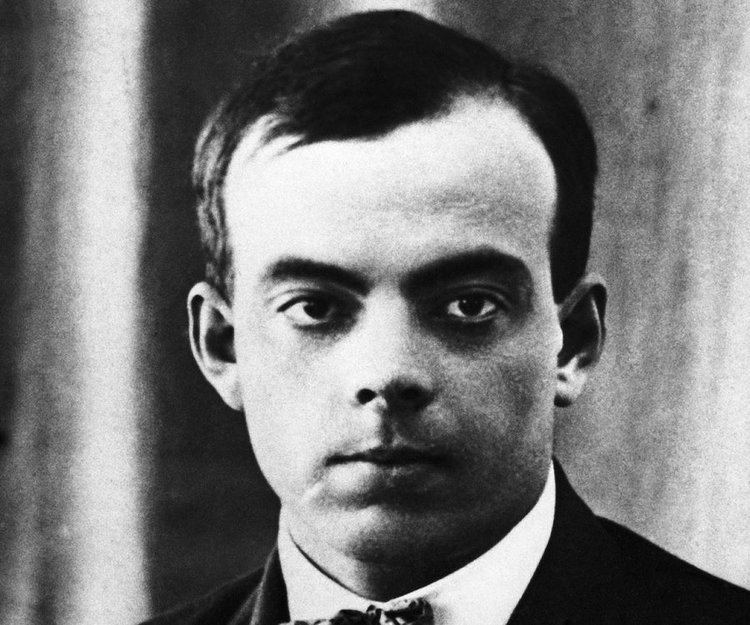
Saint-Exupéry was a successful commercial pilot before World War II, working airmail routes in Europe, Africa and South America. At the outbreak of war, he joined the French Air Force (Armée de l'Air), flying reconnaissance missions until France's armistice with Germany in 1940. After being demobilised from the French Air Force, he travelled to the United States to persuade its government to enter the war against Nazi Germany. Following a 27-month hiatus in North America, during which he wrote three of his most important works, he joined the Free French Air Force in North Africa, although he was far past the maximum age for such pilots and in declining health. He disappeared over the Mediterranean on a reconnaissance mission in July 1944, and is believed to have died at that time.
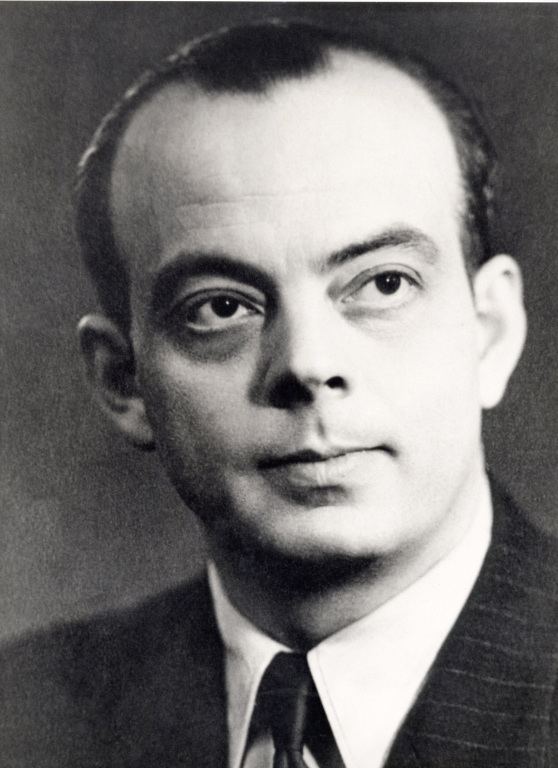
Prior to the war, Saint-Exupéry had achieved fame in France as an aviator. His literary works – among them The Little Prince, translated into over 250 languages and dialects – posthumously boosted his stature to national hero status in France. He earned further widespread recognition with international translations of his other works. His 1939 philosophical memoir Terre des hommes—Man and His World became the name of an international humanitarian group, and was also used to create the central theme of the most successful world's fair of the 20th century, Expo 67 in Montreal, Quebec, Canada.
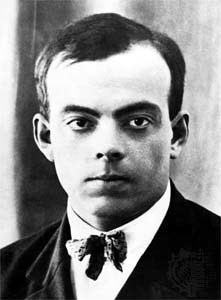
I know a planet the little prince antoine de saint exup ry poem animation
Youth and Aviation
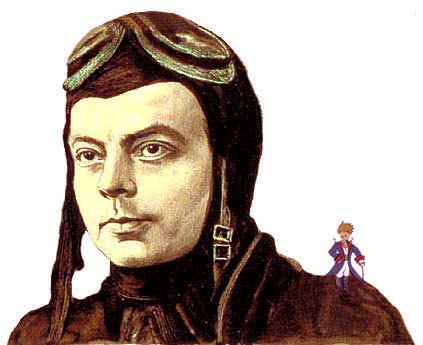
Saint-Exupéry was born in Lyon to an aristocratic Catholic family that could trace its lineage back several centuries. He was the third of five children of the Countess Marie de Fonscolombe and Count Jean de Saint Exupéry (1863–1904) . His father, an executive of the Le Soleil (The Sun) insurance brokerage, died of a stroke in Lyon's La Foux train station before his son's fourth birthday. His father's death had sadly affected the entire family, transforming their status to that of 'impoverished aristocrats'.
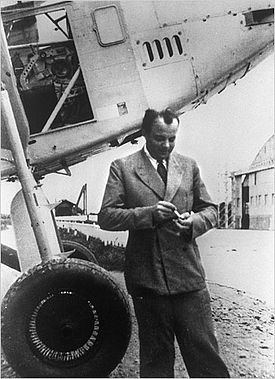
Saint-Exupéry had three sisters and a younger blond-haired brother, François, who at age 15 would tragically die of rheumatic fever contracted while both were attending the Marianist College Villa St. Jean in Fribourg, Switzerland, during World War I. Saint-Exupéry attended to his brother, his closest confidant, beside François' death bed, and later wrote that François "...remained motionless for an instant. He did not cry out. He fell as gently as a [young] tree falls", imagery which would much later be recrafted into the climactic ending of The Little Prince. At age 17, now the only "man" in the family following the death of his brother, the young author was left as distraught as his mother and sisters, but he soon assumed the mantle of a protector and took to consoling them.
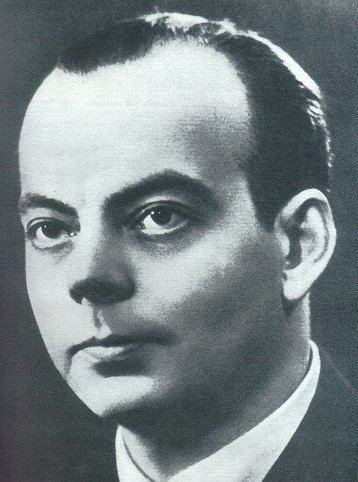
After twice failing his final exams at a preparatory Naval Academy (intentionally, some believe), Saint-Exupéry entered the École des Beaux-Arts as an auditor to study architecture for 15 months, again without graduating, and then fell into the habit of accepting odd jobs. In 1921, Saint-Exupéry began his military service as a basic-rank soldier with the 2e Régiment de chasseurs à cheval (2nd Regiment of light cavalry) and was sent to Neuhof, near Strasbourg. While there he took private flying lessons and the following year was offered a transfer from the French Army to the French Air Force. He received his pilot's wings after being posted to the 37th Fighter Regiment in Casablanca, Morocco. Later, being reposted to the 34th Aviation Regiment at Le Bourget on the outskirts of Paris, and then experiencing the first of his many aircraft crashes, Saint-Exupéry bowed to the objections of the family of his fiancée, future novelist Louise Lévêque de Vilmorin, and left the air force to take an office job. The couple ultimately broke off their engagement and he worked at several more odd jobs without success over the next few years.
By 1926, Saint-Exupéry was flying again. He became one of the pioneers of international postal flight, in the days when aircraft had few instruments. Later he complained that those who flew the more advanced aircraft had become more like accountants than pilots. He worked for Aéropostale between Toulouse and Dakar, and then also became the airline stopover manager for the Cape Juby airfield in the Spanish zone of South Morocco, in the Sahara desert. His duties included negotiating the safe release of downed fliers taken hostage by hostile Moors, a perilous task which earned him his first Légion d'honneur from the French Government.
In 1929, Saint-Exupéry was transferred to Argentina, where he was appointed director of the Aeroposta Argentina airline. He surveyed new air routes across South America, negotiated agreements, and even occasionally flew the airmail as well as search missions looking for downed fliers. This period of his life is briefly explored in Wings of Courage, an IMAX film by French director Jean-Jacques Annaud.
Writing career
Saint-Exupéry's first novella, L'Aviateur (The Aviator), was published in a short-lived literary magazine Le Navire d'Argent (The Silver Ship). In 1929, his first book, Courrier Sud (Southern Mail) was published; his career as an aviator and journalist was about to begin. That same year, Saint-Exupéry flew the Casablanca—Dakar route.
The 1931 publication of Vol de nuit (Night Flight) established Saint-Exupéry as a rising star in the literary world. It was the first of his major works to gain widespread acclaim and won the prix Femina. The novel mirrored his experiences as a mail pilot and director of the Aeroposta Argentina airline, based in Buenos Aires, Argentina. That same year, at Grasse, Saint-Exupéry married Consuelo Suncin (née Suncín Sandoval), a twice-widowed Salvadoran writer and artist, who possessed a bohemian spirit and a "viper's tongue". Saint-Exupéry, thoroughly enchanted by the diminutive woman, would leave and then return to her many times – she was both his muse and, over the long term, the source of much of his angst. It was a stormy union, with Saint-Exupéry travelling frequently and indulging in numerous affairs, most notably with the Frenchwoman Hélène de Vogüé (1908–2003), known as "Nelly" and referred to as "Madame de B." in Saint-Exupéry biographies. Vogüé became Saint-Exupéry's literary executrix after his death, and also wrote her own Saint-Exupéry biography under a pseudonym, Pierre Chevrier.
Saint-Exupéry continued to write until the spring of 1943, when he left the United States with American troops bound for North Africa in the Second World War.
Desert crash
On 30 December 1935, at 2:45 a.m., after 19 hours and 44 minutes in the air, Saint-Exupéry, along with his mechanic-navigator André Prévot, crashed in the Libyan desert, during an attempt to break the speed record in a Paris-to-Saigon air race and win a prize of 150,000 francs. The crash site is thought to have been near the Wadi Natrun valley, close to the Nile Delta.
Both Saint-Exupéry and Prévot miraculously survived the crash, only to face rapid dehydration in the intense desert heat. Their maps were primitive and ambiguous, leaving them with no idea of their location. Lost among the sand dunes, their sole supplies were grapes, two oranges, a thermos of sweet coffee, chocolate, a handful of crackers, and a small ration of wine. The pair had only one day's worth of liquid. They both began to see mirages and experience auditory hallucinations, which were quickly followed by more vivid hallucinations. By the second and third day, they were so dehydrated that they stopped sweating altogether. Finally, on the fourth day, a Bedouin on a camel discovered them and administered a native rehydration treatment that saved their lives. The near brush with death would figure prominently in his 1939 memoir, Wind, Sand and Stars, winner of several awards. Saint-Exupéry's classic novella The Little Prince, which begins with a pilot being marooned in the desert, is, in part, a reference to this experience.
American and Canadian sojourn and The Little Prince
Following the German invasion of France in 1940, Saint-Exupéry flew a Bloch MB.174 with the Groupe de reconnaissance II/33 reconnaissance squadron of the Armée de l'Air.
After France's armistice with Germany, Saint-Exupéry went into exile in North America, escaping through Portugal. He arrived in New York City on the last day of 1940, with the intention of convincing the U.S. to enter the conflict against Nazi Germany quickly. On 14 January 1941, at a Hotel Astor author luncheon attended by approximately 1,500, he belatedly received his National Book Award for Wind, Sand and Stars, won a year earlier while he was occupied witnessing the destruction of the French Army. Consuelo followed him to New York City several months later after a chaotic migration to the southern French town of Oppède, where she lived in an artist's commune, the basis of her autobiography, Kingdom of the Rocks: Memories of Oppède.
Between January 1941 and April 1943, the Saint-Exupérys lived in New York City's Central Park South in twin penthouse apartments, as well as The Bevin House mansion in Asharoken on Long Island, New York and a townhouse on Beekman Place in Manhattan.
Some researchers have implied that during his stay in the United States, Saint-Exupéry became intimate with Anne Morrow Lindbergh, wife of the famous American aviator Charles Lindbergh. Ironically, while his intention was to convince the U.S. Government of the need to fight fascism, both Anne and her husband Charles were strongly advocating against American intervention in the European war. Anne wrote a 41-page booklet, The Wave of the Future, in support of her husband, who was lobbying for a U.S.–German peace treaty similar to Stalin's treaty with Hitler. The Roosevelt administration subsequently attacked The Wave of the Future as "the bible of every American Nazi, Fascist, Bundist and Appeaser", and the booklet became one of the most despised writings of the period.
With further irony, Saint-Exupéry and Charles Lindbergh both became P-38 pilots during World War II, with a disgraced Lindbergh fighting surreptitiously in the Pacific War, and with Saint-Exupéry fighting and dying very publicly over the Mediterranean.
It was after Saint-Exupéry's arrival in the United States that the author adopted the hyphen within his surname, as he was annoyed with Americans addressing him as "Mr. Exupéry". It was also during this period that he authored Pilote de guerre (Flight to Arras), which earned widespread acclaim, and Lettre à un otage (Letter to a Hostage), dedicated to the 40 million French living under Nazi oppression, plus numerous shorter pieces in support of France. The Saint-Exupérys also resided in Quebec City, Canada for several weeks during the late spring of 1942, during which time they met a precocious eight-year-old boy with blond curly hair, Thomas, the son of philosopher Charles De Koninck, with whom the Saint-Exupérys resided.
After he returned from his stay in Quebec, which had been fraught with illness and stress, the French wife of one of his publishers helped persuade Saint-Exupéry to produce a children's book, hoping to calm his nerves and also compete with the new series of Mary Poppins stories by P.L. Travers. Saint-Exupéry wrote and illustrated The Little Prince in New York City and the village of Asharoken in mid-to-late 1942, with the manuscript being completed in October. It would be first published months later in early 1943 in both English and French in the United States, and would only later appear in his native homeland posthumously after the liberation of France, as his works had been banned by the collaborationist Vichy Regime.
Return to war
In April 1943, following his 27 months in North America, Saint-Exupéry departed with an American military convoy for Algiers, to fly with the Free French Air Force and fight with the Allies in a Mediterranean-based squadron. Then 43, soon to be promoted to the rank of commandant (major), he was far older than most men in operational units. Although eight years over the age limit for such pilots, he had petitioned endlessly for an exemption which had finally been approved by General Dwight Eisenhower. However, Saint-Exupéry had been suffering pain and immobility due to his many previous crash injuries, to the extent that he could not dress himself in his own flight suit or even turn his head leftwards to check for enemy aircraft.
Saint-Exupéry was assigned with a number of other pilots to his former unit, renammed Groupe de reconnaissance 2/33 "Savoie", flying F-5 Lightnings, which an officer described as "war-weary, non-airworthy craft". The Lightnings were also more sophisticated than models he previously flew, requiring him to undertake seven weeks of stringent training before his first mission. After wrecking a P-38 through engine failure on his second mission, he was grounded for eight months, but was then later reinstated to flight duty on the personal intervention of General Ira Eaker, Deputy Commander of the U.S. Army Air Forces.
After Saint-Exupéry resumed flying, he also returned to his longtime habit of reading and writing while flying his single seat F-5B (a specially configured P-38 reconnaissance variant). His prodigious studies of literature gripped him, and on occasion he continued his readings of literary works until moments before takeoff, with mechanics having warmed up and tested his aircraft for him in preparation for his flight. On one flight, to the chagrin of his colleagues awaiting his arrival, he circled the airport for an hour after returning, so that he could finish reading a novel. Saint-Exupéry frequently flew with a lined notebook (carnet) during his long solitary flights, and some of his philosophical writings were created during such periods when he could reflect on the world below him.
Disappearance
Prior to his return to flight duties with his squadron in North Africa, the collaborationist Vichy Regime unilaterally promoted Saint-Exupéry as one of its members – quite a shock to the author. Subsequently, French General (later French President) Charles de Gaulle, whom Saint-Exupéry and others held in low regard, publicly implied that the author-pilot was supporting Germany. Depressed at this, he began to drink heavily. Additionally, his health, both physically and mentally, had been deteriorating. Saint-Exupéry was said to be intermittently subject to depression, and there was discussion of taking him off flying status.
Saint-Exupéry's last assigned reconnaissance mission was to collect intelligence on German troop movements in and around the Rhone Valley preceding the Allied invasion of southern France ("Operation Dragoon"). Although he had been reinstated to his old squadron with the provision that he was to fly only five missions, on 31 July 1944, he took off in an unarmed P-38 on his ninth reconnaissance mission from an airbase on Corsica. To the great alarm of the squadron compatriots who revered him, he did not return, dramatically vanishing without a trace. Word of his disappearance shortly spread across the literary world and then into international headlines. A French woman reported much later having watched an aircraft crash around noon near the Bay of Carqueiranne off Toulon. An unidentifiable body in a French uniform was found several days after his disappearance east of the Frioul archipelago south of Marseille and buried in Carqueiranne in September.
Discovery at sea
In September 1998, Jean-Claude Bianco, a fisherman, found east of Riou Island, south of Marseille, a silver identity bracelet (gourmette) bearing the names of Saint-Exupéry and of his wife Consuelo and his American publisher, Reynal & Hitchcock, hooked to a piece of fabric, presumably from his flight suit. The recovery of his bracelet was an emotional event in France, where Saint-Exupéry had by then assumed the mantle of a national icon, and some disputed its authenticity as it was found far from his intended flight path, implying that the aircraft might not have been shot down.
In May 2000, Luc Vanrell, a diver, found the partial remains of a Lockheed P-38 Lightning spread over thousands of square metres of the seabed off the coast of Marseille, near where the bracelet was previously found. The discovery galvanized the country, which for decades had conducted searches for his aircraft and speculated on Saint-Exupéry's fate. After a two-year delay imposed by the French government, the remnants of the aircraft were recovered in October 2003.
On 7 April 2004, Patrick Granjean, head of the French Ministry of Culture, Captain Frederic Solano of the French Air Force, plus investigators from the French Underwater Archaeological Department confirmed that the remnants of the crash wreckage were, indeed, from Saint-Exupéry's Lockheed F-5B.
No marks or holes attributable to gunfire were found; however, that was not considered significant as only a small portion of the aircraft was recovered. In June 2004, the fragments were given to the Air and Space Museum in Le Bourget, Paris, where Saint-Exupéry's life is commemorated in a special exhibit.
The location of the crash site and the bracelet are less than 80 km by sea from where the unidentified French serviceman was found in Carqueiranne, and it remains plausible, but has not been confirmed, that the body was carried there by sea currents after the crash over the course of several days.
Speculations in 1948 and 2008
In 1948, former Luftwaffe telegrapher Rev. Hermann Korth made public his war logs, noting an instance on July 31 around midday where a Focke-Wulf Fw 190 downed a P-38 Lightning, which ostensibly supported a shoot-down hypothesis for Saint-Exupéry. Though popular in the 1960s and 70s, Korth’s log was met with skepticism, as it described aerial combat, which was inconsistent with the fact that Saint-Exupéry’s plane was unarmed. Evidence exists, however, of a P-38 flown by Second Lieutenant Gene Meredith downed in combat on July 30 around the same location.
Luftwaffe reconnaissance pilot Robert Heichele was shot down on 16 August 1944 and died five days later; he is buried in the German military cemetery at Dagneux, France. Issue No. 725 of the German magazine Der Landser quoted a purported letter from Heichele in which he claimed to have shot down a P-38 on 31 July 1944. The credibility of this letter is suspect because it claims that Heichele and his wingman were flying the Focke-Wulf Fw 190 D-9, a variant which had not yet entered Luftwaffe service. The letter also claims that the hostile aircraft initiated an attack on the Germans, whereas Saint-Exupéry was flying an unarmed F-5 reconnaissance variant. In the lists held by the Bundesarchiv-Militärarchiv, no victory is accredited to Heichele or his unit in July or August 1944; the decrypted report of the day's reconnaissance missions by the parent formation, Fliegerdivision 2, does not include any flights by 2./NAG 13's Fw 190s.
In 2008, a French journalist from La Provence, investigating Saint-Exupéry's death, contacted hundreds of former Luftwaffe pilots, eventually getting an account from Horst Rippert, who believed he shot down Saint-Exupéry. After the war, Rippert's memoirs expressed both fears and doubts that he was responsible, but in 2003 he stated he became certain when he learned the location of Saint-Exupéry’s wreckage. Rippert stated he reported the kill over his radio, but no documents exist to verify his account.
Former Luftwaffe comrades reacted with skepticism to Rippert's claim, as he held it private for 64 years. Two French and German books discuss the alleged Saint-Exupéry shoot-down. Very little German documentation survived the war, and contemporary archival sources, consisting of Allied intercepts of Luftwaffe signals, offer no evidence to verify Rippert’s account. Thus, Rippert’s claim remains a hypothesis until proven otherwise, and the cause of Saint-Exupéry’s death remains unknown.
Literary works
While not precisely autobiographical, much of Saint-Exupéry's work is inspired by his experiences as a pilot. One notable example is his novella, The Little Prince, a poetic tale self-illustrated in watercolours in which a pilot stranded in the desert meets a young prince fallen to Earth from a tiny asteroid. The Little Prince is a philosophical story, including societal criticism, remarking on the strangeness of the adult world. One biographer wrote of his most famous work: "Rarely have an author and a character been so intimately bound together as Antoine de Saint-Exupéry and his Little Prince," and remarking of their dual fates, "...the two remain tangled together, twin innocents who fell from the sky." Saint-Exupéry's notable literary works (published English translations in brackets) are constituted by:
Published posthumously
Other works
During the 1930s, Saint-Exupéry led a mixed life as an aviator, journalist, author and publicist for Air France, Aéropostale's successor. His journalistic writings for Paris-Soir, Marianne and other newspapers covered events in Indochina and the Far East (1934), the Mediterranean, Soviet Union and Moscow (1935), and the Spanish Civil War (1936–1937). Saint-Exupéry additionally wrote a number of shorter pieces, essays and commentaries for various other newspapers and magazines.
Notable among those during World War II was "An Open Letter to Frenchmen Everywhere", which was highly controversial in its attempt to rally support for France against Nazi oppression at a time when the French were sharply divided between support of the Gaullists and Vichy factions. It was published in The New York Times Magazine in November 1942, in its original French in Le Canada, de Montréal at the same time, and in Pour la Victoire the following month. Other shorter pieces include (in French except where translated by others to English):
Censorship and publication bans
Pilote de guerre (Flight To Arras), describing the German invasion of France, was slightly censored when it was released in its original French in his homeland, by removing a derogatory remark made of Hitler (which French publisher Gallimard failed to reinsert in subsequent editions after World War II). However, shortly after the book's release in France, Nazi appeasers and Vichy supporters objected to its praise of one of Saint-Exupéry's squadron colleagues, Captain Jean Israël, who was portrayed as being amongst the squadron's bravest defenders during the Battle of France. In support of their German occupiers and masters, Vichy authorities attacked the author as a defender of Jews (in racist terms) leading to the praised book being banned in France, along with prohibitions against further printings of Saint-Exupéry's other works. Prior to France's liberation new printings of Saint-Exupéry's works were made available there only by means of covert print runs, such as that of February 1943 when 1,000 copies of an underground version of Pilote de guerre were printed in Lyon.
A further complication occurred due to Saint-Exupéry's and others' view of General Charles de Gaulle, who was held in low regard. Early in the war, de Gaulle became the leader of the Free French Forces in exile, with his headquarters in London. Even though both men were working to free France from Nazi occupation, Saint-Exupéry viewed de Gaulle with apprehension as a possible post-war dictator, and consequently provided no public support to the General. In response, de Gaulle struck back at the author by implying that the author was a German supporter, and then had his literary works banned in France's North African colonies. Saint-Exupéry's writings were, with irony, banned simultaneously in both occupied France and Free France.
Extension of copyrights in France
Due to Saint-Exupéry's wartime death, his estate received the civil code designation Mort pour la France (English: Died for France), which was applied by the French Government in 1948. Amongst the law's provisions is an increase of 30 years to the duration of the original copyright's duration of 70 years; thus most of Saint-Exupéry's creative works will not fall out of copyright status in France for an extra 30 years.
Honours and legacy
Museums and exhibits
Museum exhibits, exhibitions and theme villages dedicated to both him and his diminutive Little Prince have been created in Le Bourget, Paris and other locations in France, as well as in the Republic of South Korea, Japan, Morocco, Brazil, the United States and Canada.
International
Institutions and schools
Other
Numerous other tributes have been awarded to honour Saint-Exupéry and his most famous literary creation, his Little Prince:
Film
Literature
Music
Television
In the 15th episode of WKRP In Cincinnati entitled "Never Leave Me, Lucille," Les Nessman names Saint-Exupéry as his favourite author.
Theatre
In August 2011, the world premiere of Saint-Ex, a theatrical production of Saint-Exupéry's life, was launched at the Weston Playhouse in Weston, Vermont. The live theatre musical explores in drama and song the aviator-author's early life, the aerial band-of-brothers he flew with at Aéropostale, and the raucous relations between him and his fiery Latin writer-artist wife, born Consuelo Suncín Sandoval Zeceña. The production was written by the husband and wife team of lyricist Sean Barry and composer Jenny Giering, and staged with the assistance of director Matt Castle and set designer Tim Mackabee, plus choreography by Jennifer Turey. The leading cast members include Alexander Gemignani (playing Saint-Exupéry), Krysta Rodriguez (playing his tempestuous wife Consuelo), Cass Morgan (Saint-Exupéry's mother, author Countess Marie de Fonscolombe), plus Charlie Brady (Aéropostale pilot and Air France director Henri Guillaumet). Although the musical production successfully debuted on 25 August 2011, the theatre was soon deluged with two-to-four metres of water generated by Hurricane Irene, which struck the east coast of the United States three days later. After pumping the floodwaters from the building and partially restoring the costumes and stage sets, the musical production "resurfaced" on 2 September.
Quotes
It is only with the heart that one can see rightly; what is essential is invisible to the eye
Love is not just looking at each other - it's looking in the same direction
Perfection is achieved - not when there is nothing to add - but when there is nothing left to take away
